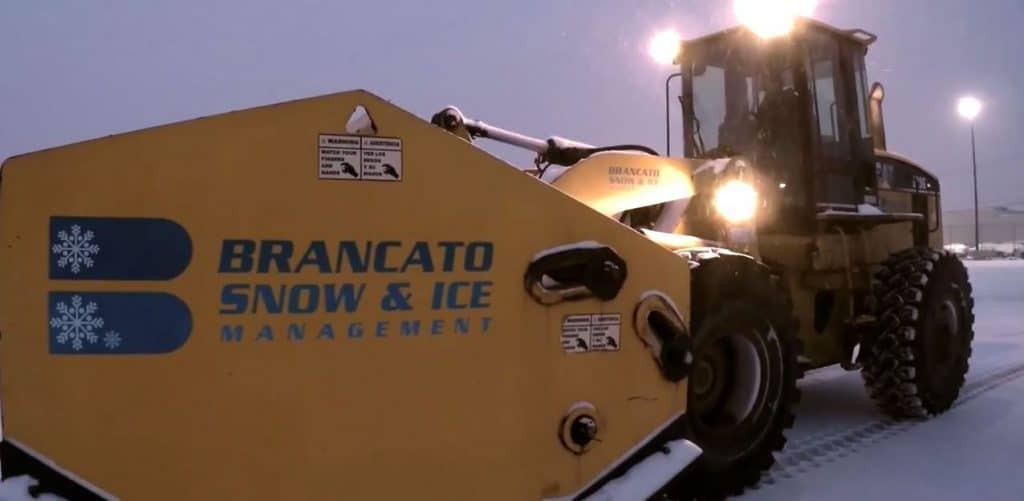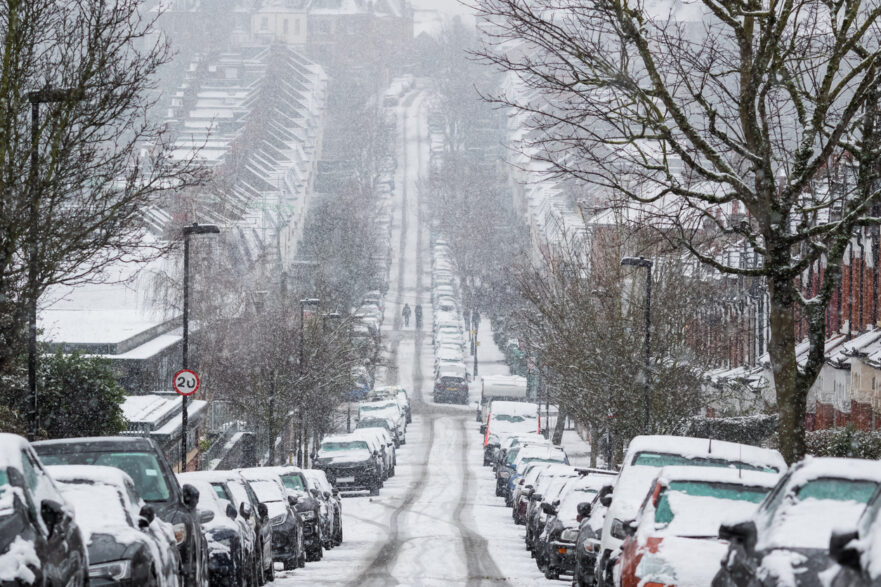We all know that snow plowing is just a part of doing business in the Northeast.
It isn’t whether there will be snow, but when and how much. Sometimes, though, we get surprised by the things we just take for granted in the daily routine of life. January of 1996 was just one of those times…
It should have been an average snowstorm. Early January isn’t known for the heavy stuff that often will hit in December or February. In fact, most places see a “January Thaw” rather than a half-billion-dollar blizzard. But in 1996, January was going to see the biggest storm some places had seen in over 100 years of recordkeeping! The cold air filtering down from Canada wasn’t particularly cold. The warm, humid air came up with a storm that wasn’t particularly strong. It all started with that fairly average nor’easter.
It developed in the Gulf of Mexico as an inverted low-pressure trough and then moved up the Eastern seaboard. Its development as it moved over the Gulf States and up the Southeast was a little complicated, but that didn’t initially cause any concern. The computer models had been calling for a coastal snowstorm since late December and here it was. The only thing that no one could agree on was how big of a storm it would be.
Initial Forecasts Give Way to a White Reality
Forecasters had noted that one of the forecast models was not in agreement with the others, leading them to take a closer look at their findings. Just over 48 hours before the storm hit the Northeast, it was obvious that this was going to be no ordinary storm. The National Weather Service began issuing watches and warnings days before the nor’easter collided with the cold air that had settled into New England and the Mid-Atlantic states. Forecasters were certain that there was going to be a snow event, but they were less certain as to where it would start or how much it would bring.
As state and local governments in the New England states began to prepare for an impending snowstorm, the weather centers were noting some concerning developments. As the storm gained strength it began tracking more to the North and West, threatening the Ohio River Valley and Pennsylvania.
The Blizzard of 1996 Begins in Earnest
By the time the first flakes began to fall in northern Virginia the governor had already declared a state of emergency and airlines had moved their aircraft from Eastern cities. Those first flakes started during that early Saturday afternoon, moving from the southern Virginia coast toward the mountain valleys of West Virginia. It spread out along the Ohio River and then east, affecting cities from Pittsburgh to New Jersey. In Washington, DC, snow fell consistently for 24 hours, stopping public transit and forcing a second federal government shutdown in a month’s time. Although Virginia was the best prepared, it was still challenged with dealing with the sudden influx of snow. The blizzard caused white-out conditions and snowdrifts up to ten feet. Power outages kept thousands of people in the dark as utility crews were snowed in.
The storm slowly made its way north into Pennsylvania. Philadelphia ground to a halt as over 30-inches of snow fell through blinding blizzard-like winds. Over thirty emergency vehicles were stranded on the roads, including 15 firetrucks. On both sides of the Delaware River, highways and primary roads were closed. So much snow fell in such a short amount of time that buildings were hard-pressed to bear the sudden weight. Barns throughout Pennsylvania collapsed, prompting the closure of flat-topped buildings such as grocery stores. Philadelphia was completely paralyzed by the heaviest snowfall on record. The area further west of the metro area to Harrisburg saw 20-30 inches of snow as well.
New Jersey is Overwhelmed
As the storm continued its track into New England it dumped even more snow on northern New Jersey. The snow began before dawn on January 7th, becoming heavy as the winds increased. The whiteout conditions wrapped the northern half of the state in snow as the storm tracked across the state. The Trenton-Mercer Airport was one of the first to record official blizzard conditions. After the first 24 hours of snow, the storm moved offshore. This funneled additional moisture over the area and led to the second day of heavy snow.
The state would record its second-largest snowfall in recorded history just south of the Newark/Elizabeth area, 32-inches of snow! From south of Trenton to Sussex County, snowfall was recorded from 20-32 inches over two days of continual snow, keeping snow plowing services busy for days.
A Tight Gradient
The southern part of the state was inundated with sleet and freezing rain, causing slick conditions that had to be treated with thousands of pounds of material for ice management. The blizzard stranded hundreds of motorists and hundreds more at the Trenton Transit Center train station. The state services were overwhelmed and for the first time in its history, the entire New Jersey Turnpike was closed. The National Guard had to be activated to rescue state troopers from buried police cruisers. Houses were buried in snowdrifts and the streets were emptied of traffic. Thousands of customers were left without heat or electricity for days. Schools and government services were closed for a week.
New York City recorded over 20 inches of snow blanketing Manhattan Island, with other boroughs measuring over 30 inches. The city’s transit system was brought to its knees, with even the subway system shut down. The story was the same in Providence and Boston as the storm continued its relentless progress across New England. Connecticut was buried in over 18 inches of snow. Rhode Island and eastern Massachusetts saw 24 inches of the white stuff. The western mountains of Massachusetts had over 33 inches of snowfall. New England ground to a halt for days.
The Blizzard Leaves More Problems
Once the snow stopped falling the problems were just starting. In Philadelphia, citizens and service workers flooded the streets after the blizzard was over to begin the arduous task of removing the snow. Snow removal services were working overtime to provide snow plowing services to public buildings and businesses. Those without services arranged ahead of time were closed for almost a week. With so much snow to remove at once, the city had no real option but to start dumping the snow into the Delaware and Schuylkill rivers. This created issues with the natural flow and function of the riverways.
This was further complicated by a sudden warm front that caused the rapid melting of the remaining snow. The rivers could not handle the additional watershed because of the snow and ice that had collected along the shoreline. This caused record-breaking flooding, which was worsened by torrential thunderstorms that followed the warm-up. Other cities all up and down the Eastern Seaboard were facing the same issues.
Plan Ahead for Snow Plowing Services
The businesses that had planned ahead were the ones that were able to serve their communities first. They had secured snow plowing services to clear their snow and remediate their ice issues. Many commercial snow removal services will assist state and local governments with snow removal, but only after they have satisfied their obligations to their customers. This means that those without contracts come in third place to get their parking lots cleared and their sidewalks cleaned. Don’t get caught without a plan when a plan is most needed. Brancato is your go-to for commercial snow plowing services. We can provide you with a clear plan for getting your business back in action. We can help you stay one step ahead of your competition!

Choose Brancato For Your Snow Plowing Services
At Brancato, we are dedicated to giving you the best snow plowing services at the best possible price. Our crews are professional and we pride ourselves on our preparedness for the winter’s worst. We have teams located throughout the metro area to cover your business when it needs it the most. Contact us today to get a free consultation and quote. We guarantee you will be satisfied!

